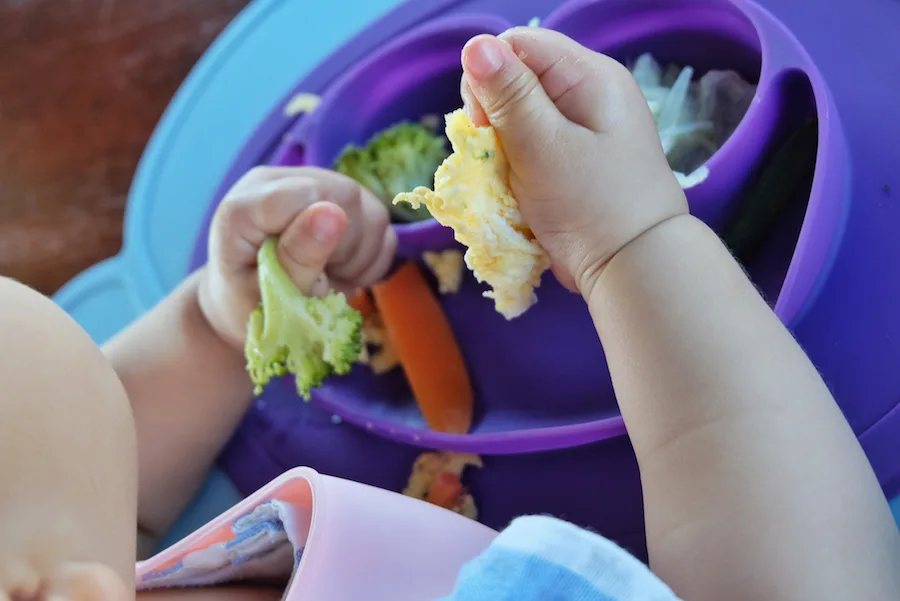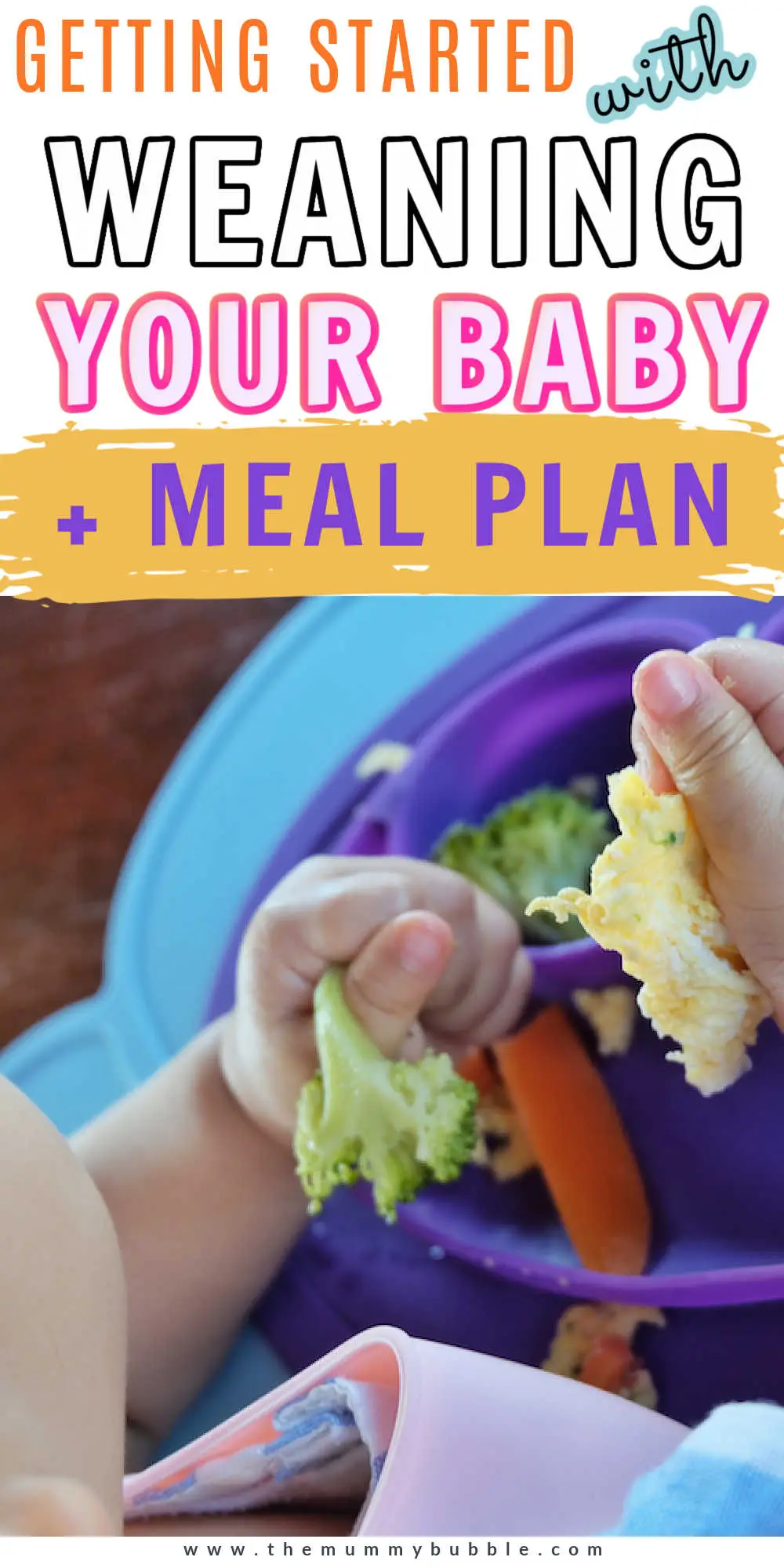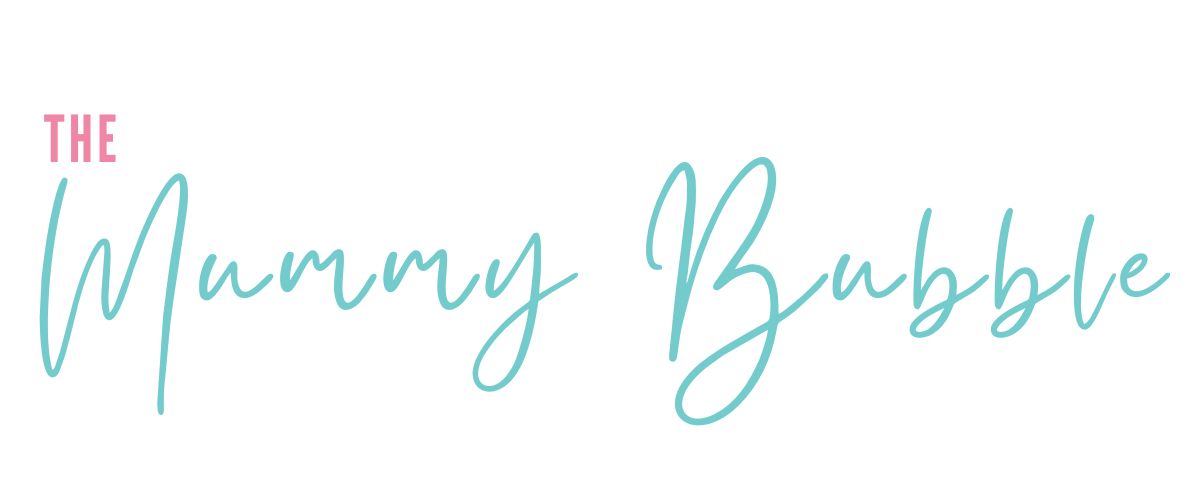
Weaning your baby is an exciting time as they explore brand new tastes and experience the fun of feeding themselves.
But for a new parent it may feel daunting when you have just gotten used to your daily routine with your baby to now think about adding something new.
This easygoing weaning meal plan and routine for babies at six months will show you how to get started with weaning your baby.
This weaning routine is for both baby-led and traditional weaning, and you can also adapt the meal plans to suit your method of weaning your baby.
Remember that food is for fun until they are one, and just do not pressure yourself if your baby does not seem to enjoy sold foods right away.
Scroll to the end of the post for four weeks of meal plans for your baby to get started with first foods and the weaning process!
When to wean your baby
The NHS states that weaning should happen when your baby is around six months. Before that they should be on infant formula milk or breast milk.
Your baby continues to get most of their calories and nutrients from infant milk even at six months when they begin on solid foods.
It’s important that you see the first six months of weaning as an introductory period to eating, rather than a big race to get them on three proper meals a day right at the start.
Some babies will take the full six months to get to a point where they are eating three meals, and dropping milk feeds.
By the time your baby is one they should have, hopefully, dropped down to two or three milk feeds per day and be happily eating three times per day.
You may find your baby struggles a little every now and then in the first few months of weaning, before it suddenly clicks by the time they are 10 or 11 months.
Some babies take to solid food right away and guzzle down everything they are given. Others may refuse food at meal times.
The key is to be consistent and remind yourself that this is a learning curve and they will get there in the end.
Should you choose baby-led or traditional weaning
This is really up to you and most importantly, weaning is not an all-or-nothing experience.
So first of all, what do I mean by these two options?
Baby-led weaning is where you offer your soft bits of food they can reach out and grab to feed themselves.
Traditional weaning is where you feed baby pureed food from a spoon. You may start spoon-feeding them yourself before moving on to letting them have a go.
There are lots of theories behind why baby-led weaning has advantages, but truthfully as long as your baby is being exposed to a range of taste it really does not matter what you do.
You could choose to start with traditional weaning for the first few weeks and then add in some finger foods as you and your baby get used to the process.
I went with the traditional route and would use a food processor to puree their meals.
As my babies got used to eating and the different flavours, I would gradually mash the food less and less, making the texture lumpier. By the time they were about 10 months old they were just eating food I had cut into shreds with a knife and fork.

I either fed them this on a spoon or they had a go at picking it up and feeding themselves.
So you see I did a bit of a mixture of the two things and it worked out really well for us.
This post contains affiliate links.
How to prepare food for baby weaning

To start with I thoroughly recommend you get either a handheld blender, which you can get for less than £20 on Amazon, or one of these little Kenwood Mini Choppers.
A large food blender will be a pain to wash after use and you really don’t need anything big.
The other essential items for weaning include:
- Baby spoons
- Baby bowls
- Bibs (preferably ones with a lip that catches the food falling out of their mouths)
- High chair (IKEA does a super cheap one)
- Mat or shower curtain (to go under the high chair to protect your floor)
- Ice cube trays or weaning freezer trays (to store food in the freezer as batch cooking really is the way forward). This one from Amazon is great.
Once you have all of your kit ready you can prepare your own meals for your baby easily.
Of course there are a ton of jars and pouches on the market that you can buy, but if you already cook all your own meals then you can save yourself some money by just setting a tiny amount aside for your baby.
There are some foods, such as banana and mango, that you only need to chop up and mash. Mango may need to put into a food processor to puree it as mashing it tends to be a bit hit and miss.
Others such as potato, parsnip, and squash will need cooking to soften it. Simply prepare in the usual way by peeling and chopping, then simmer in boiling water before draining and then adding to your food processor.
With foods such as pear and apple it may be better to steam them until they are tender so they don’t lose too much flavour.
When it comes to adding things such as salt, sugar and stock from cubes, try to avoid doing so with the first tastes of simple veg and fruit. When you do move on to cooking meals such as stews and pasta dishes for your baby, I thoroughly recommend using low salt stock cubes if you do want to use those.
Begin with single tastes, rather than jumping straight into meals. The best first foods are:
- Potato
- Sweet potato
- Banana
- Mango
- Baby rice
- Pear
- Broccoli
- Cauliflower
- Apple
- Spinach
- Parsnip
- Butternut squash
You could set aside some of your own cooked vegetables, then blitz them into a puree and either serve fresh to your baby or freeze in the ice cube trays.
What makes a portion for your baby really depends on the size of the ice cube trays, as some of the weaning freezer trays hold quite a large portion of food.
Plan to offer your baby one to two tablespoons of food per meal in the first week, and then add a little more if they want it.
Baby weaning routine at six months
This routine is assuming you start with just one meal per day at the beginning of weaning your baby at six months.
If all goes well, you can add a breakfast of solids at 8am after two or three weeks. If it takes longer to add this meal, that’s fine. There’s no rush.
| Time | What’s baby doing |
|---|---|
| 7am | Wake-up and have a milk feed |
| 10am | Milk feed |
| 10.30am | Nap |
| 11.30am | Lunch – solids |
| 1pm | Milk feed |
| 1.30pm | Nap |
| 3.30pm | Wake-up and play |
| 4pm | Milk feed |
| 6.45pm | Bath |
| 7pm | Milk feed and bedtime routine |
| 7.30pm | Bed |
Weekly baby weaning meal plan
Scroll down to download a printable version of this meal plan!
Week 1
In the first week of weaning start small. There’s no rush of pressure to get your baby on three solid meals a day just yet!
So focus on offering small tastes of vegetables and fruit to get them used to the act of eating and the range of flavours beyond milk.
I recommend starting with just one meal a day. Lunchtime is quite a good place to start, as your baby may be more tired in the late afternoon at dinner time.
How you choose to feed your baby the things in the meal plans will depend on whether you have chosen to do baby-led or traditional weaning. Remember you can do a mixture of the two, it’s not an all-or-nothing game!
When starting off, try offering just a couple of spoonfuls to your baby. If they like it then offer them more.
If they reject the food, then don’t worry about it. Try again the next day. Your baby may not immediately take to food, so just keep offering them.
It may help to sit together as a family to eat, as it encourages your baby to eat if they also see you doing so.
MONDAY
Mashed or sliced banana
TUESDAY
Baby rice (mix with formula or breast milk)
WEDNESDAY
Mango
THURSDAY
Mashed potato (add extra milk if it is a little thick, the NHS says cows’ milk can be used in cooking from six months)
FRIDAY
Broccoli
SATURDAY
Cauliflower
SUNDAY
Parsnip
Week 2
MONDAY
Yoghurt (start with plain natural yoghurt)
TUESDAY
Carrot (if doing baby-led weaning peal and chop carrot into sticks before steaming until tender, otherwise steam and then mash or puree)
WEDNESDAY
Sweet potato (add milk to make the consistency a little thinner if needed)
THURSDAY
Pear (peel, core and slice then steam the pear. You could offer the slices for baby-led weaning or puree them for traditional)
FRIDAY
Butternut squash
SATURDAY
Green beans
SUNDAY
Spinach
Week 3
By week three your baby should be getting used to this new routine so you can step it up a tiny notch.
Remember if your baby is rejecting most food you are offering them, do not panic! Continue to offer a little food and keep experimenting with different tastes.
In week three you could start to offer breakfast as well. The best way to incorporate this into your daily routine is to offer the solids around one hour after their morning breastfeed.
Baby rice or baby cereal is a good way to start with breakfast for your baby. You can also mix fruit puree such as apple, apricot or pear with your baby’s cereal.
MONDAY
Breakfast
Baby rice or cereal mixed with pear puree.
Lunch
Root vegetable medley – combine cooked potato, parsnip and carrots into a mash
TUESDAY
Breakfast
Baby rice or cereal mixed with apple puree.
Lunch
Broccoli
WEDNESDAY
Breakfast
Baby rice or cereal mixed with mango puree.
Lunch
Sweet potato
THURSDAY
Breakfast
Baby rice or cereal mixed with apple puree.
Lunch
Parsnip
FRIDAY
Breakfast
Baby rice or cereal mixed with apricot puree.
Lunch
Potato mash
SATURDAY
Breakfast
Baby rice or cereal mixed with strawberry puree.
Lunch
Cauliflower
SUNDAY
Breakfast
Baby rice or cereal.
Lunch
Spinach
Week 4
Now that your baby has been trying a lot of fruit and veg, you could start to add meat and fish to their menu!
Keep it simple, avoiding any processed meats such as ham. Your baby should not be eating shellfish until they are one. Stick with chicken, beef, pork, lamb salmon, cod and other white fish to start with.
Remember to either puree or thoroughly shred meat so that your baby won’t choke on big chunks.
If you have been using the traditional method of weaning until now, you could add a few finger foods in such as soft carrot sticks, cooked florets of broccoli or cauliflower, and bread or toast cut into thin strips.
MONDAY
Breakfast
Baby rice or cereal mixed with fruit puree or just milk
Lunch
TUESDAY
Breakfast
Baby rice or cereal mixed with fruit puree or just milk
Lunch
WEDNESDAY
Breakfast
Baby rice or cereal mixed with fruit puree or just milk
Lunch
Slow cooked lamb and veg (you can make this for your own dinner as well, simply mash or puree when serving it for your baby)
THURSDAY
Breakfast
Baby rice or cereal mixed with fruit puree or just milk
Lunch
FRIDAY
Breakfast
Baby rice or cereal mixed with fruit puree or just milk
Lunch
Cheesy pasta – use this cheese sauce recipe and just add to some cooked pasta before blitzing in a food processor
SATURDAY
Breakfast
Baby rice or cereal mixed with fruit puree or just milk
Lunch
SUNDAY
Breakfast
Baby rice or cereal mixed with fruit puree or just milk
Lunch
Scrambled eggs (add a little extra milk if you think the texture is too lumpy) with toast cut into soldiers



Lisa
Monday 15th of February 2021
Thank you for writing this. As a first time mum, the guidance on weaning is very vague online on the NHS. I find this page so helpful and now I have an idea of what to feed and when to introduce more food. Thank you so much.
Vicky Smith
Friday 2nd of April 2021
@Lisa, You're so welcome! I'm really glad the weaning plan and tips have given you some helpful ideas! xx